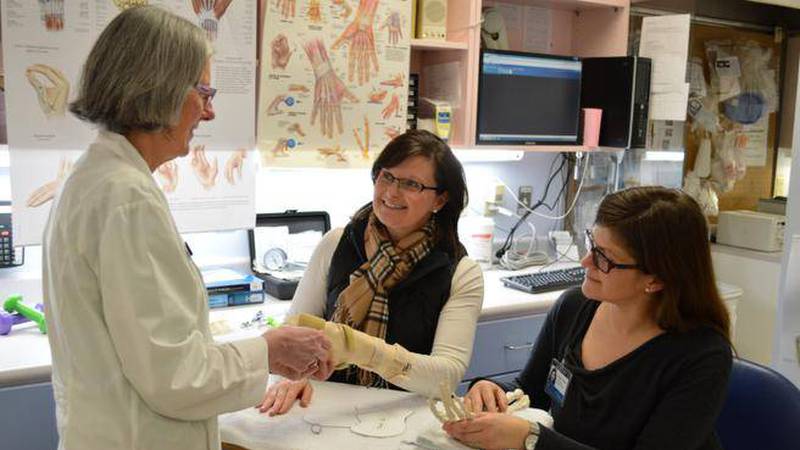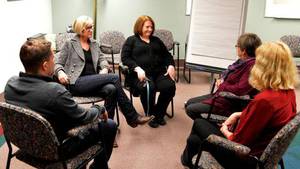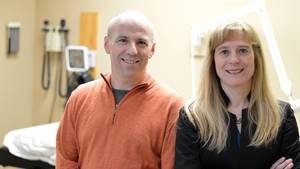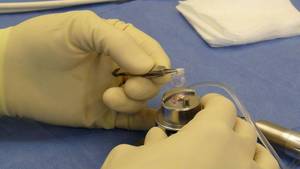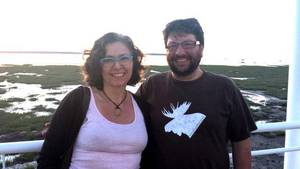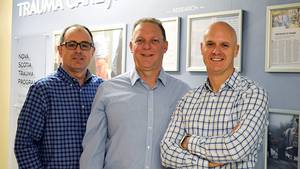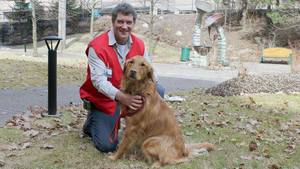On May 16, 2014, Katharine Berrington was preparing dinner for her family in her Halifax home. Briefly distracted, she cut not her carrot but her pinky finger, severing the tendon.
Needless to say; it hurt.
She had surgery to repair the tendon two days later, and afterwards she wore a cast. But when it came off her fingers were significantly swollen and purple. “As soon as the stitches were out, I went to the QEII’s occupational therapy hand clinic for them to start working with me to recover,” she says.
The post-surgery pain burned as if her hand and arm were on fire. By early July, it was clear she had developed complications and was diagnosed with Complex Regional Pain Syndrome, a rare neuropathic pain disorder.
For months, with the help of the QEII’s acute pain service, as well as occupational therapy and physiotherapy, Katharine worked diligently to try to work through this unrelenting pain. Using a variety of custom made splints and other devices designed specifically for Katharine, they helped her improve her range of movement and strength and to cope with her new functional challenges.
By fall 2015, 18 months post-surgery, the pain was gone and she was once again able to use her dominant hand to do most things, including write with a pen, return to yoga, ride a bike and yes, chop vegetables.
Rosemary Mooney and Michelle Richards, occupational therapists at the clinic, treat about 1,500 people each year. Many have had recent surgery to repair damaged bone or tissues and others are dealing with more long-standing conditions like arthritis.
“Our focus is on function,” Michelle says. “The goal is to get people back to their everyday lives.”
Rosemary, Michelle and their colleagues in the outpatient clinic have seen many challenging cases and are always amazed by the resilience shown by clients like Katharine.
“Clients are reassured by the occupational therapists’ confidence in their ability to heal,” says Rosemary. “And a positive attitude can go a long way on their road to recovery.”
Some of the devices the team uses to help patients heal look quite intricate, but they generally work to strengthen the arm and hand. For example, a damaged radial nerve in your arm can result in a dropped wrist. A stable wrist is necessary for proper use of fingers and thumb for fine motor activities, such as gripping utensils for eating. The clinic has a device to support your wrist so your hand can resume its usual work of grasping and lifting.
“We interact with the world using our face and hands. It's the way we communicate and the way we welcome people. We take it for granted until we lose that ability.”
Patients cope with loss of hand function in different ways. It can be more impactful for those who are self-employed, whose livelihoods are suddenly threatened, or those who require a great amount of finger dexterity to perform their job, such as professional musicians.
The goal isn’t always to recover 100 per cent function, but rather to find ways to adapt to their current situation and resume meaningful lives.
“Our goal is rehabilitate people as much as we can,” Michelle says. “In some situations they may not get fully back to where they started. If that’s the case, we’ll try to help them adapt to a new way of life. That’s why we like to focus on function. If handwriting is an issue and you can’t grip a pen, we would look at finding a different strategy for writing.”
Katharine calls herself a grateful patient as she continues her recovery.
“As much as the occupational therapists are skilled at understanding the injury and the rehab,” she says, “they were incredible with helping with the emotion and the depression that came with the injury in such a soothing and compassionate way.”

